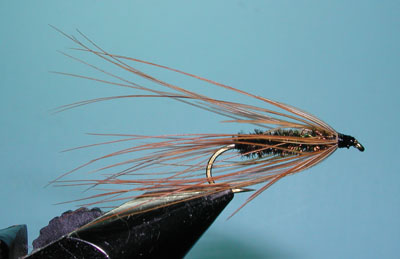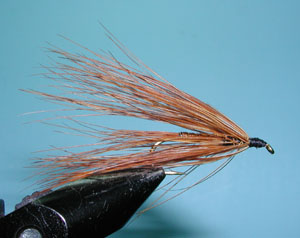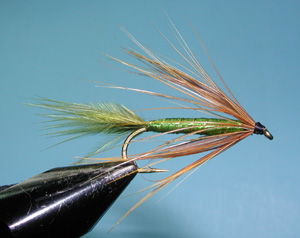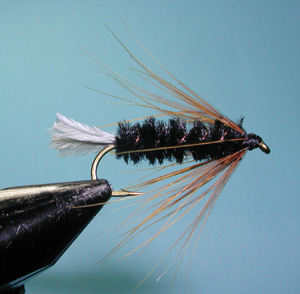

 Tying Instructions |
Materials:
|
|
Notes: Originally called the "Monkey-faced Louise", until receiving the
name Carey Special. It was aptly named the Carey Special from its originator, Colonel (Tom) Carey of
Quesnal, BC.
Colonel Carey served in the British Army during WW I and fought in Tripoli. After the war, Col. Carey migrated to British Columbia, primarily for the fishing. Doctor Lloyd Day of Kelowna found a groundhog on his fishing trip to Arthur Lake in the late 1930's and
asked Colonel Carey to tie a fly from the hairs. It was designed as a dragonfly nymph or an emerging
sedge pupa which would be
slowly retrieved through stillwaters. The original version used the Groundhog hairs for the tail and
body. The body was ribbed in reverse with black silk thread. The collar was of two Chinese Pheasant
Rump feathers with several turns each giving a thick collar that swept past the tail. Carey's design was inspired by an earlier fly pattern known as the "Monkey Faced Louise", that was tied by a local First Nation fly fisher in the area. Carey adapted this pattern with the Yorkshire technique of wrapping the soft-hackle collar in front of the body behind the eye. Carey's variation became such a success with the BC anglers that it received it's own name, the Carey Special. Today, the Carey Special
is usually tied with pheasant rump rather than groundhog for the tail. Many body colors are added to the Carey style
using chennille, floss, peacock, and various dubbings for the body along with ribbings. Commercially-tied Careys will
often have the collar hackle rarely longer than the tail. Most modern Careys will also have a more sparsely
wrapped collar hackle of one or two turns. The tails of many modern Carey's will also use Marabou rather
than the traditional Pheasant Rump tips. The "Self Bodied" Carey uses only the pheasant rump
for both the body and the hackle. The Black Carey Special represents the dark dragonfly nymphs within
stillwaters and the Olive Carey Special will represent both dragonfly nymphs and olive sedges. | ||
Variations: |
|
"Self-Bodied" Carey |
Materials:
|
Olive Carey |
Materials:
|
Black Carey |
Materials:
|
|